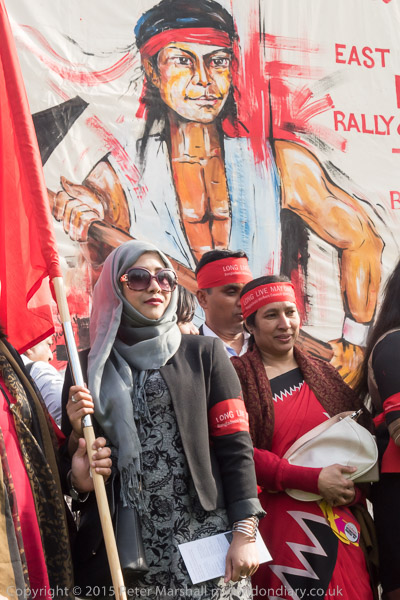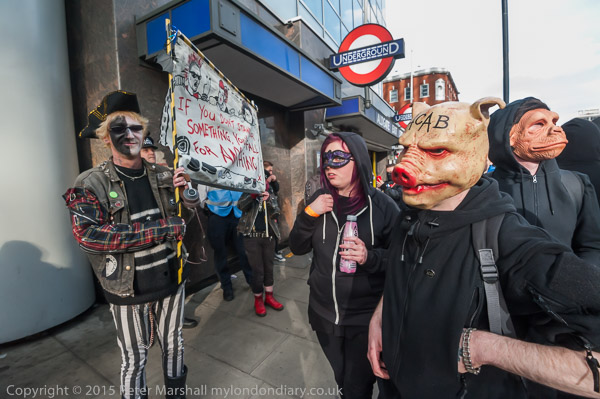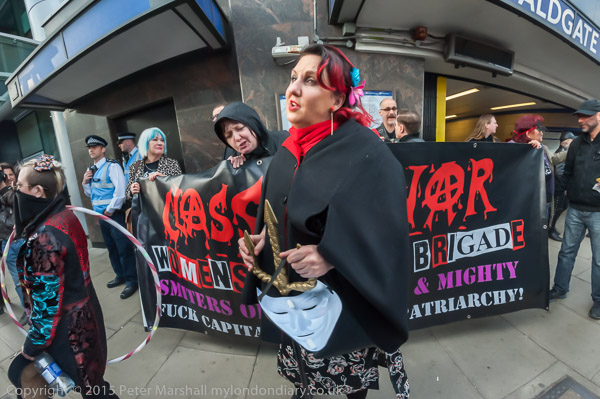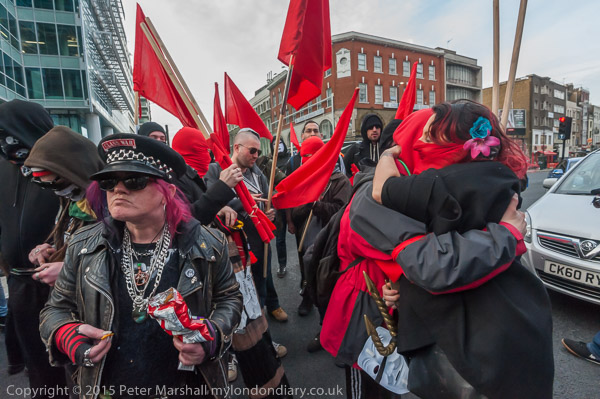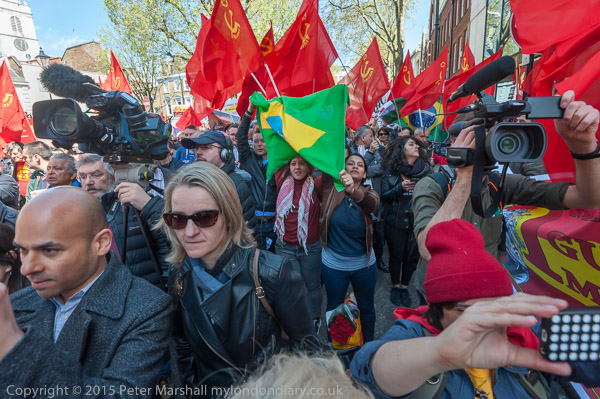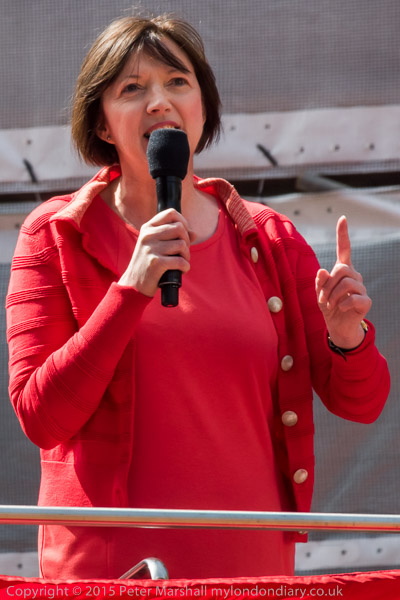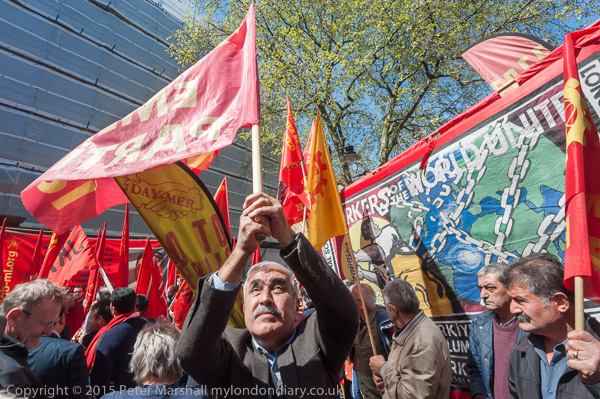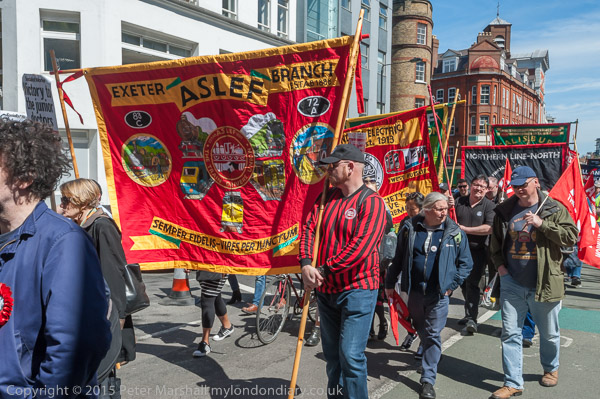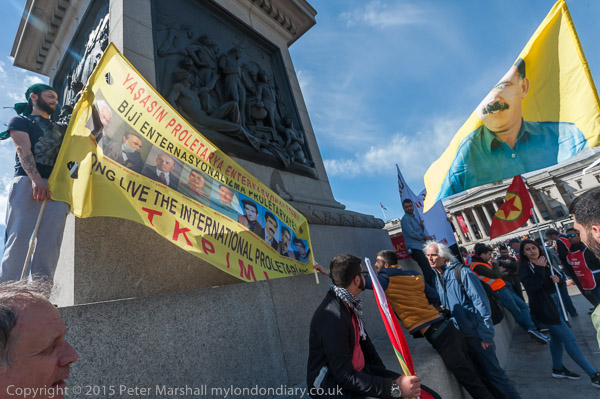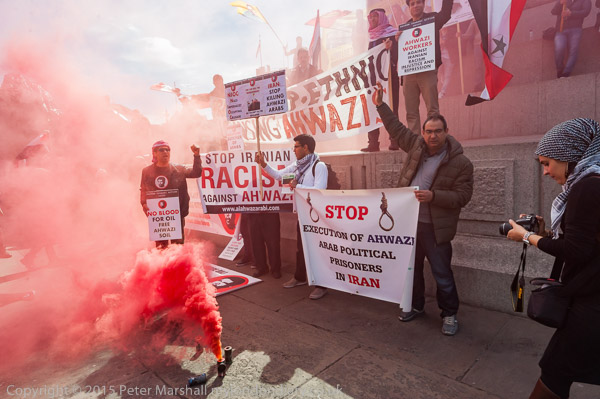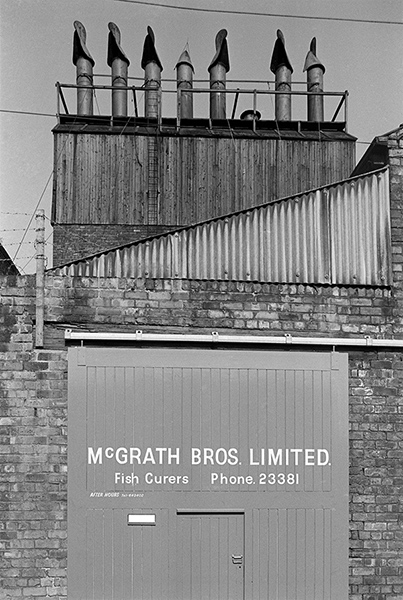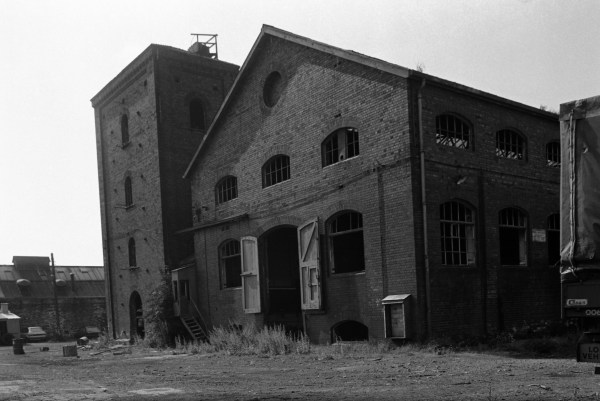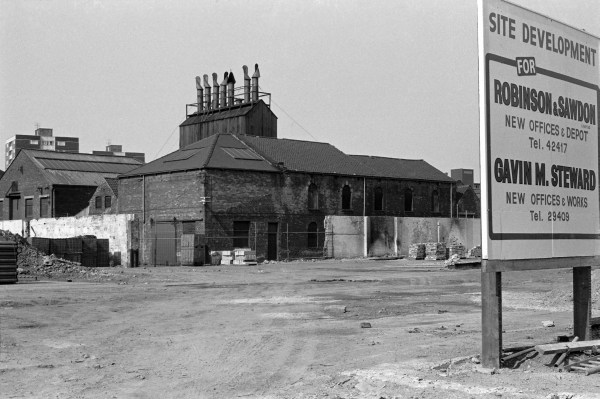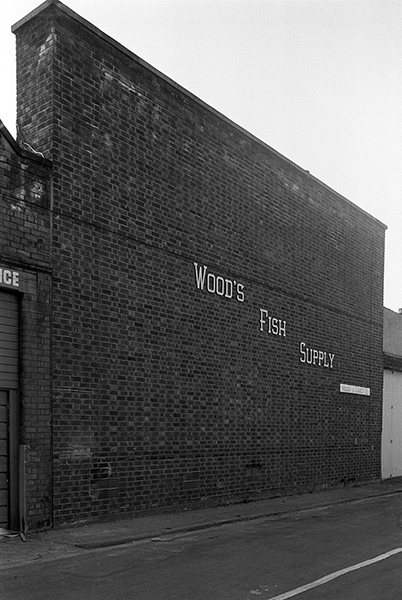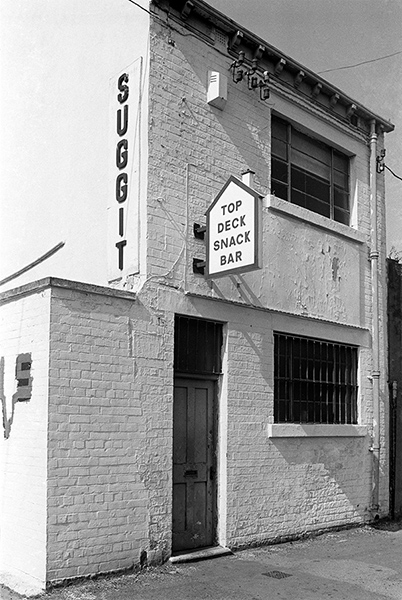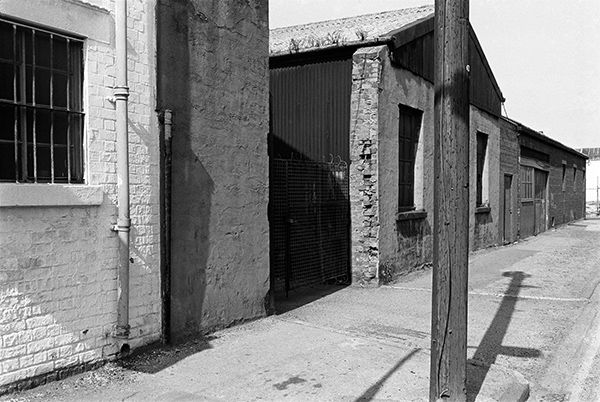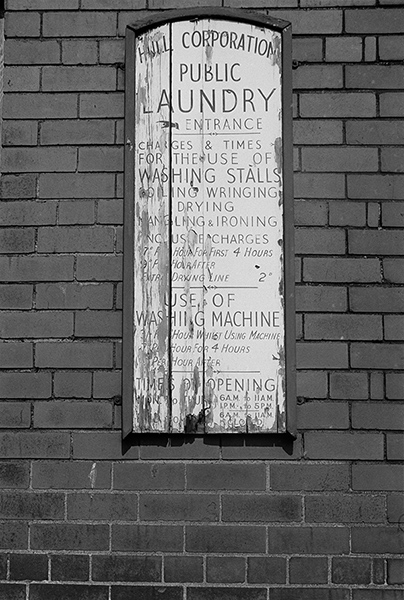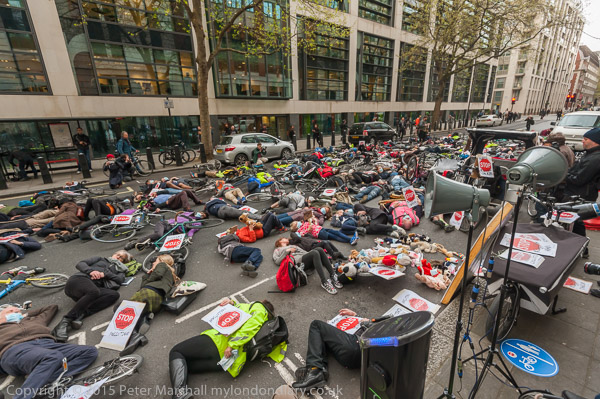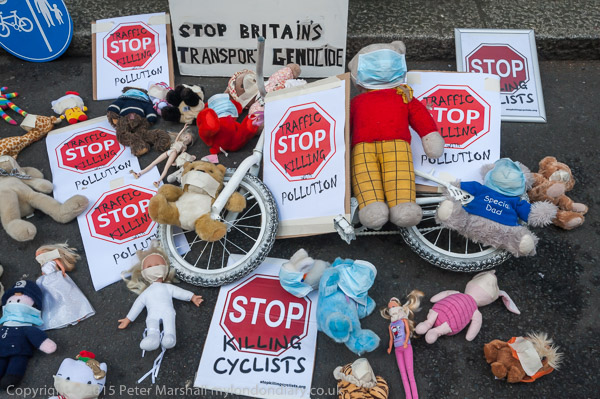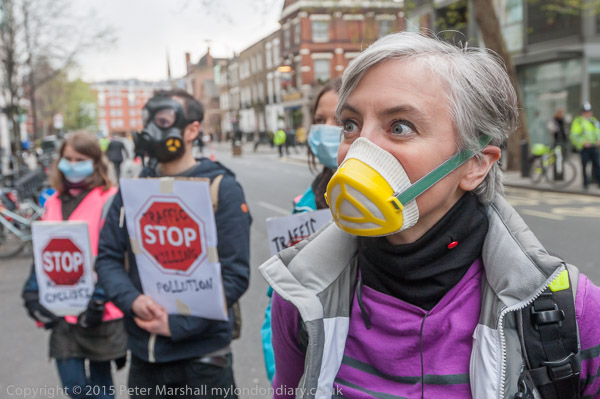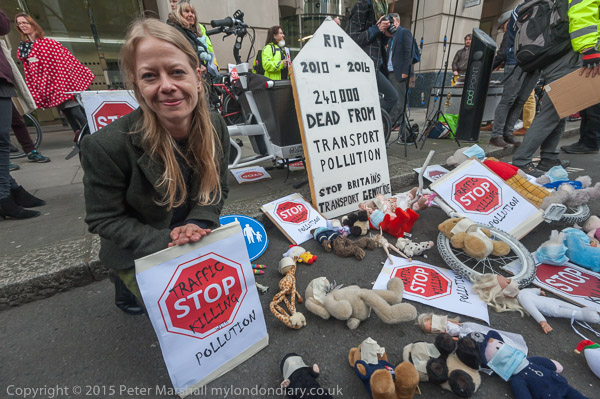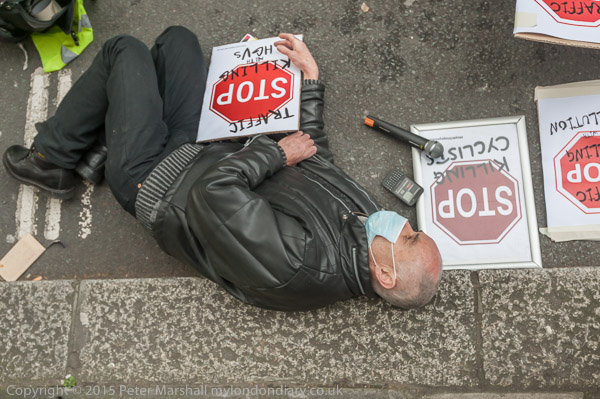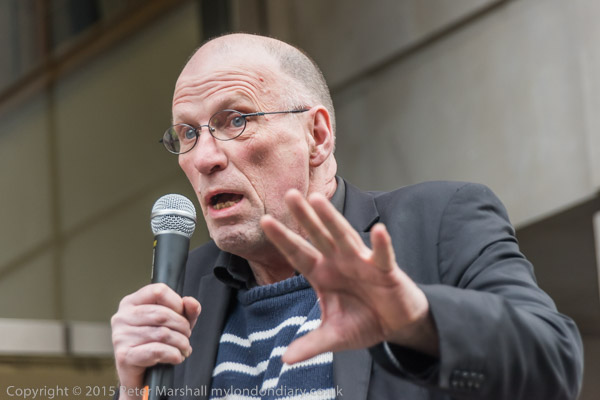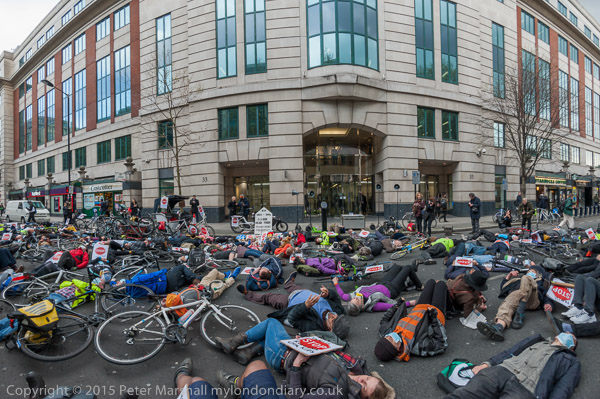“And then I changed my mind” was the sentence I left off my previous piece on May Day 2016 (and have now added). It was May Day, and though I was tired and hungry I knew that things were going to get interesting.
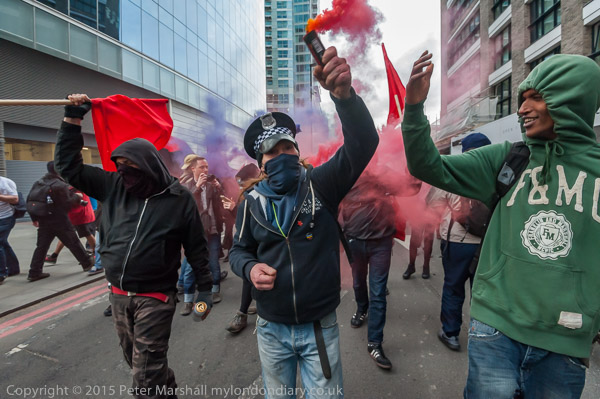
The party, F**k Parade 4, sound system at eleven and coloured smoke flaring, set off down Leman St, led by the Class War banner with a man wearing a pigs head and with me hurrying backwards in front.
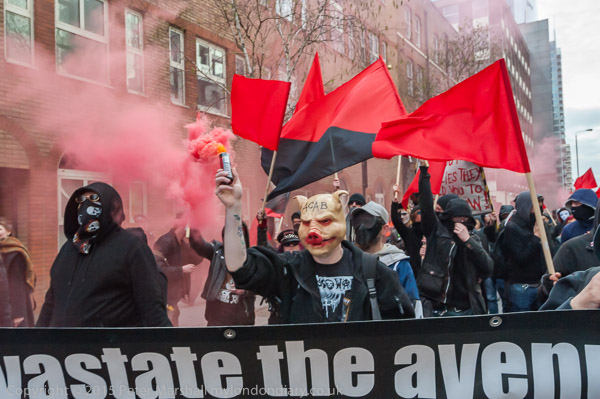
After going under the railway bridge they turned left into Cable St and massed outside the Jack the Ripper premises, perhaps London’s sleaziest tourist attraction, where I’d previously photographed Class War and feminist groups at several protests and vigils. A line of police guarding its front looked quite worried as Class War brought their banner to stand in front of them, but soon the air was too full of red smoke to see much, and I was finding breathing unpleasant.
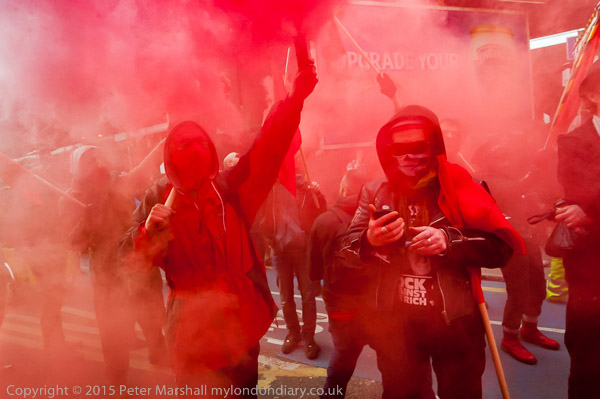
You need to be a little distance away from the smoke both to breathe well and to get good images. When you are actually in it things get difficult to see and the camera metering becomes unreliable. Fortunately the marchers soon moved off, and it became clear they were heading for Tower Bridge.
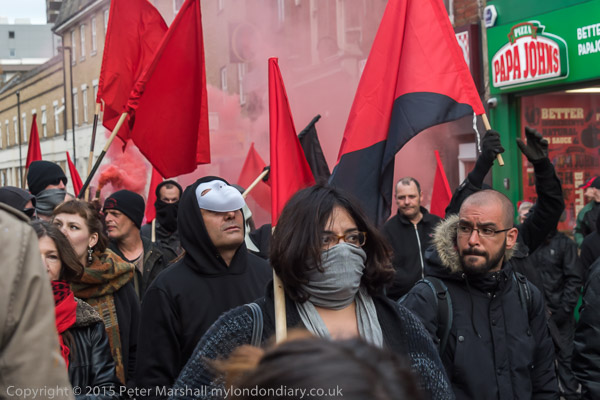
And I wasn’t disappointed as having blocked the bridge there were then more flares and also fire-breathing.
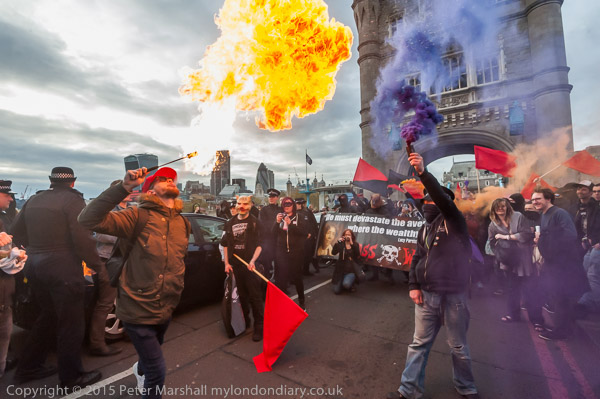
It’s technically pretty impossible to get good pictures when a huge cloud of fire explodes into the air, the extreme brightness of the flame compared with the ambient light is beyond the capabilities of film or sensor. And it certainly is more than the automatic exposure can do to get the best balance. Parts of the flame are white, burnt out where the light intensity has overexposed the sensor, with no detail that can be recovered in post-processing.
I think I should have taken the pictures here using manual exposure, but I actually made them using ‘P’ setting, as things were just happening too fast to think much about the technical stuff. The camera – D700 – has underexposed by around a stop so far as the general scene is concerned, plus the 0.3 stops under I normally have set. Working around dusk at ISO 3200 this gave an exposure of 1/500th f11, enough to more or less stop action and give plenty of depth of field. Ideally I think I should have underexposed perhaps another stop or two, perhaps using the same aperture and speed but working at a lower ISO. This would have given me a little more highlight detail and made post-processing easier – considerable work was needed on these pictures.
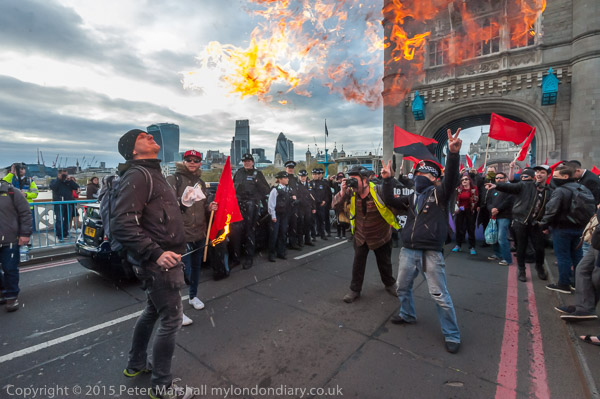
I don’t think the metering really reacted much to the fire, as the exposure remained pretty much the same across a series of frames with different amounts of flame. In the second image you can see (at least on a larger image) the rain of drops of unburnt paraffin which was falling on me.
After the marchers left the bridge I followed them on to Tooley St before deciding the time had come when I could no longer ignore the messages of my body, and I left to go home. I was sorry to do so, as I guessed from previous conversations that they would be heading towards the long tunnel that takes Bermondsey St under the railway lines from London Bridge, where both the sound and the visual effect would be great.

